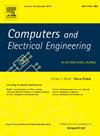Hybrid deep learning system for crop disease classification using modified SegNet segmentation
IF 4.9
3区 计算机科学
Q1 COMPUTER SCIENCE, HARDWARE & ARCHITECTURE
引用次数: 0
Abstract
In traditional agricultural systems, managing crop diseases faces significant challenges, primarily due to the reliance on visual inspection and manual symptom identification. These methods are often time-consuming, error-prone, and may fail to detect diseases early or accurately, leading to ineffective treatments and substantial crop loss. Furthermore, the unpredictability of disease symptoms and the existence of similar-looking diseases complicate diagnosis. To address these limitations, there is a growing necessity for innovative deep learning-based methods. This study proposes an advanced Modified LinkNet-Bidirectional Long Short-Term Memory (MLBLSTM)-based system for crop disease classification, incorporating a multi-step process starting with data collection from three datasets: apple, corn, and pepper plant leaves. The preprocessing phase utilizes Enhanced Wiener Filtering (EWF) to preserve high-frequency details and enhance image quality. The filtered images are processed through an advanced Modified SegNet (MSegNet) model to do the segmentation process. Feature extraction follows, leveraging Hierarchy of Skeleton (HOS), Modified Local Gabor Increasing Pattern (MLGIP), Median Binary Pattern (MBP), and statistical features. Finally, the classification step employs a hybrid model combining Modified LinkNet (MLNet) with a novel σ-SE block and Bidirectional Long Short-Term Memory (Bi-LSTM) classifiers. The validation results prove the performance of MLBLSTM model measures with an accuracy of 0.947, a sensitivity of 0.955, and a specificity of 0.936.
基于改进SegNet分割的作物病害分类混合深度学习系统
在传统农业系统中,管理作物病害面临重大挑战,主要是由于依赖目视检查和人工症状识别。这些方法往往耗时,容易出错,而且可能无法及早或准确地发现疾病,导致无效的治疗和重大的作物损失。此外,疾病症状的不可预测性和类似疾病的存在使诊断复杂化。为了解决这些限制,越来越需要创新的基于深度学习的方法。本研究提出了一种先进的基于改进linknet双向长短期记忆(MLBLSTM)的作物病害分类系统,该系统从苹果、玉米和辣椒三个数据集的数据收集开始,结合了一个多步骤的过程。预处理阶段利用增强维纳滤波(EWF)来保留高频细节并提高图像质量。过滤后的图像通过一种先进的修改分段网络(MSegNet)模型进行分割处理。接下来是特征提取,利用骨架层次(HOS)、改进的局部Gabor增加模式(MLGIP)、中位数二值模式(MBP)和统计特征。最后,分类步骤采用了一种混合模型,将改进的LinkNet (MLNet)与一种新颖的σ-SE块和双向长短期记忆(Bi-LSTM)分类器相结合。验证结果表明,MLBLSTM模型的测量精度为0.947,灵敏度为0.955,特异性为0.936。
本文章由计算机程序翻译,如有差异,请以英文原文为准。
求助全文
约1分钟内获得全文
求助全文
来源期刊

Computers & Electrical Engineering
工程技术-工程:电子与电气
CiteScore
9.20
自引率
7.00%
发文量
661
审稿时长
47 days
期刊介绍:
The impact of computers has nowhere been more revolutionary than in electrical engineering. The design, analysis, and operation of electrical and electronic systems are now dominated by computers, a transformation that has been motivated by the natural ease of interface between computers and electrical systems, and the promise of spectacular improvements in speed and efficiency.
Published since 1973, Computers & Electrical Engineering provides rapid publication of topical research into the integration of computer technology and computational techniques with electrical and electronic systems. The journal publishes papers featuring novel implementations of computers and computational techniques in areas like signal and image processing, high-performance computing, parallel processing, and communications. Special attention will be paid to papers describing innovative architectures, algorithms, and software tools.
 求助内容:
求助内容: 应助结果提醒方式:
应助结果提醒方式:


